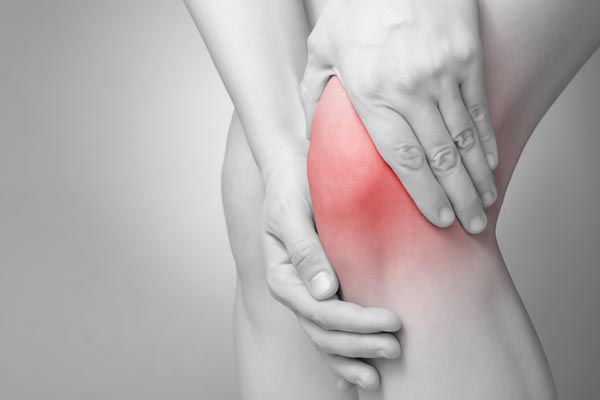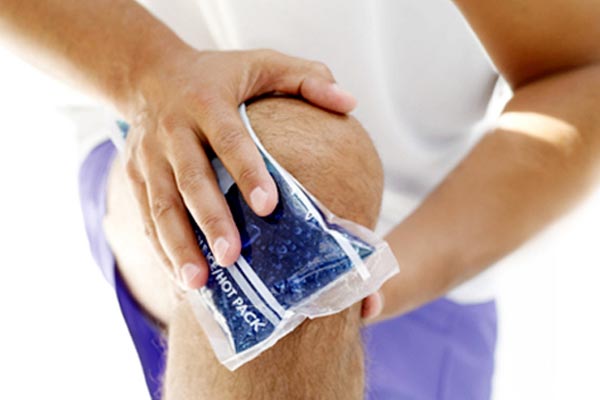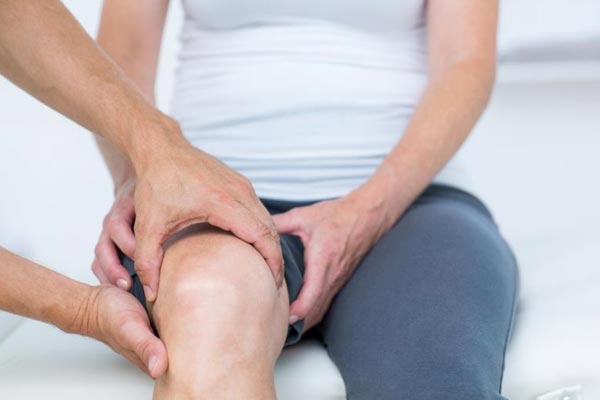
Having some discomfort here or there after being active for a long time might seem like such a minor inconvenience, but it turns out that this could be the sign of a bigger health problem that has a number of names and faces.
There are a number of different ways to describe joint pain and that is because there are several places where it can develop throughout the human body.
The simplest way to define it is the pain or any form of discomfort that is found within a joint – the point where multiple bones will meet.
The name for this condition actually varies as well – whether it is a type of arthritis or a form of arthralgia.
With the different types of joints that the pain can come from, it can be as mild as an ache or a form of soreness that flares up with each movement you make using that specific joint.
But then there are some cases where the joint pain can be a severely excruciating pain that make any type of movement impossible to take – like not being able to get out of bed in the morning.
The good news is that most forms of joint pain can be taken care of at home.
What are the causes of joint pain?
What should be known is that there are several different conditions that people can find themselves afflicted with that can lead to having joint pain of any kind.
According to the Mayo Clinic online database, there are nearly 30 different causes for the joint pains you might be dealing with on a daily basis.
They range from muscle strains, broken bone, sprains, strains and tendinitis to various forms of arthritis and pain syndromes (including fibromyalgia) to critical cancers such as bone cancer and leukemia.
One of the questions a person dealing with joint pain might have is when they might have to start thinking about going to see a doctor about what they are dealing with.
If you are dealing with swelling of the joint and the area surrounding it, a redness in color or a feeling of either warmth or tenderness of that joint area, you will want to make an appointment with your primary health care physician as soon as possible.
However, if you find yourself dealing with an intense amount of pain, swelling that happened instantly, not being able to move the joint at all or if there is any type of deformity in that area, you will want to start looking to see a doctor right away – which would require making a visit to the nearest emergency medical center.
What are the symptoms of joint pain?
One of the easiest ways you will develop some form of joint pain is if you suffer an injury that causes damage to a ligament, tendon or the bursa – a sac that is filled with fluid that helps counter any friction that would occur between the two bones – all of which surrounds each joint in the body.
The injury that takes place can also cause further damage to the neighboring ligaments, cartilage and even the bones that surround this joint.
Depending on the exact cause of the joint pain, you will find that you might have some form of joint inflammation – i.e. rheumatoid arthritis or osteoarthritis – or even an infection of the area.
In only a few rare cases, you might find yourself dealing with a cancer within that joint, which will lead to a more advanced joint pain.
These symptoms can be found in any joint you can injure – including the shoulder, ankle, or knee.
The list of symptoms that mean you have an advanced form of joint pain include finding a redness, swelling and tenderness of the joint, as well as feeling the occasional locking of the joint that will not allow you to move easily.
You may also feel some stiffness and/or weakness that will extremely limit the range of motion that you have with that joint.
If the joint you are feeling pain from is emanating from an ankle or knee, you will likely show some degree of limping as you walk – never mind trying to run effectively either.

How does a doctor diagnose joint pain?
Honestly, there’s no secret test regarding joint pain specifically. But there are tests that a doctor can administer in an effort to find the cause of why you are dealing with this joint pain.
If it’s related to an injury caused by playing a sport – for example, you twisted your ankle by landing wrong in a game of basketball – the doctor might just have you rest without putting all of your weight on your leg.
But when it comes to a condition like rheumatoid arthritis, there are a number of things that can be done – which will start with going over all of the symptoms that the patient is dealing with.
This evaluation includes your doctor going into how long you have been dealing with the joint pain, how much pain you would rate it on a scale of one to ten, and how often you feel the effects of said joint pain.
The next step is usually a physical exam where the joints are being tested for any injury, structural damage and swelling.
There might be some additional laboratory exams done that will look at the blood or fluid in the joint that is in pain for more tests that can see if there is a bigger problem than just a simple pain in the knee or shoulder.
Your doctor may also want to have some x-ray images taken in an effort to view what the damage looks like within the body.
The tests for rheumatoid arthritis can also be done will help find a number of other joint pain related issues, including osteoarthritis, gout, fibromyalgia and other autoimmune conditions.
What are the different treatment options?
The good news is that you will find a number of easy ways to help alleviate the different types of joint pain.
You can accomplish short-term relief from the joint pain by doing a number of remedy options at home that don’t require having to make a trip to the doctor.
The first thing to do is provide some level of protection by using either a wrap or even a brace around the shoulder, knee or ankle – all of which can be found in any pharmacy store for less than $30.
The second step is to get plenty of rest and avoid any form of activity that can cause more pain.
Apply some ice multiple times per day for periods of 15 minutes, followed by using an elastic wrap in order to compress the joint and then elevating the joint above your heart.
The ice will help reduce the swelling. If you are dealing with some form of muscle spasm in that area, you can apply some heat to help as well.
While you want to rest and avoid strenuous activity, you also don’t want to do too much rest because if the joint is stationary for too long a period of time, you will have developed stiffness and that will come with the loss of some functionality.
Another way to help alleviate your joint pain is to make a visit with a certified physical therapist who is able to assist you in your efforts to improving the strength of the joint muscles of that affected area while also making your range of motion better than before the pain.
Many of these professionals will also utilize a number of different techniques in addition to using various exercises and stretches to help you – this includes using ultrasound, heat or ice therapy and even stimulation using an electrical nerve manipulation machine.
One of the ways these exercises help a person is helping someone lose any excess weight that they carry, which having around your frame can actually be one of the biggest culprits to cause your joint pain in the first place.
Obviously if you are going to go this route, you want to make sure you are doing low-impact exercises by either swimming or riding a bicycle.
Even water aerobics can help because the water is buoyant and will also take away some of the pressure on your affected joints.
While there are a number of natural treatment options like the ones listed above, there are a number of different medicines that can either be prescribed or purchased over the counter at a local pharmacy.
For example, there are a number of nonsteroidal anti-inflammatory drug (NSAID) that include a variety of aspirin, Ibuprofen and naproxen sodium – all of which will actually help get rid of the joint pain that is bothering you.
But as science has evolved over the years, so have the types of NSAIDs that include a number of celecoxib inhibitors that pretty much do the same job in a more efficient manner of time.
However some of the newest NSAIDs have been pulled from the shelves due to the side effects that include a higher chance of heart attacks, strokes and other cardiovascular issues.
Now there are additional drugs that can help if none of these are helping with the more severe cases of joint pain.
There have been a number of opioid drugs that have been developed that should only be take while under the care of a health care physician, mostly due to the increased drowsiness that occurs after taking the opioid.
Now there are also other side effects that include constipation. You can also consider looking into picking up a muscle relaxer to help with any spasm, which can be used along with any NSAID you have received.
You can also find some form of antidepressant drugs in an effort to cause interference with pain signals being sent to the brain, which is just another way of alleviating the pain.
There are also a number of topical substances that can be applied to the joint directly, many of which can be purchased over the counter at your local pharmacy.
One example of a useful ingredient is capsaicin, which is found in various types of chili peppers, can reduce and eliminate any pain of the joints because it blocks the substances that help send pain signals to the brain through the central nervous system. Doing such will actually help you block pain all together.
Capsaicin can be found in a number of creams, including Icy Hot, and will provide some burning and warmth, which might sting, to the area that you applied to cream to. Another effective option includes methyl salicylate.
Now if the topical treatments and the recommended medications aren’t fulfilling your pain relief needs, there are a number of injections that can be ordered by your primary health care physician via a steroid that is combined with some form of anesthetic.
This is usually injected into the affected joint area once every three or four months. This method is one of the most widely used treatment methods.
While it is extremely effective, there are some issues with the pain only leaving the joint for a temporary amount of time.
There are also a number of side effects that include further damage that can happen due to overusing the injections for too long of a time period.
In addition to the steroid injection, a doctor may actually use a needle to remove excess fluid from that joint, or they could use a synthetic version of a natural joint fluid known best as hyaluronan.
With everything listed above, there are a number of additional alternative methods of treatment that can be found that are more in favor with people who prefer using more natural methods or any other type that doesn’t include any type of synthetic or artificial substances that are usually formulated through scientific laboratories and a number of clinical trials for study.
The good news is that you will find that many of the alternative supplements found at various online and physical retailers will feature a number of effective ingredients like glucosamine and chondroitin – both of which are key in eliminating joint pain and making your range of motion better.
These types of supplements are also known for being formed by natural substances found within the joint’s cartilage that is used to cushion the bones and protect the joints.
These supplements come in a number of forms, including pill, powder and liquid. They won’t work for all people who take them, but they are a million times safer than some of the other scientifically manufactured treatments and will offer nearly no negative side effects.
Other alternative treatment options also include activities such as yoga and other forms of stretching that have been well known to have several therapeutic benefits that will help reduce the joint pain naturally.
There are also a number of people who believe that acupuncture will allow you to naturally release healing properties that have some of the same benefits found in the stretching exercises.
But no matter which treatment option you choose, you must make sure to see a physician if you are suffering from extreme amounts of pain that can make you unable to move that part of the body at all.

What is the best way to cope with joint pains?
In many cases of joint pain, you aren’t likely to have anything life threatening unless you don’t take the appropriate actions early on.
So one of the first things you should do once you discover the joint pain is to talk speak with your primary doctor at your next visit about the pains you are feeling and the concerns you have.
When doing so, you have to fully disclose your family’s medical history and which medicines or supplements you have taken or still take.
As mentioned above, there will be tests administered to find out what is the exact cause of your chronic joint pain.
After his diagnosis, there will be treatment options provided to you and from there, you will be able to do things at home on your own to eliminate the pain.
That includes doing daily exercises and stretching as described above – and make sure you pace yourself so you don’t overdo anything physical, which can make the condition a lot worse.
If you can do these things, plus maybe make a few adjustments to your current lifestyle, there’s no question as to whether you will be able to find some form of relief from your joint pain and the issues that are closely related to it.
The key is to avoid extreme types of exercises and either not doing enough or doing too much in treatment.
It also wouldn’t hurt to treat yourself to some relaxation, like a little break, to lift your spirits mentally and provide yourself fa better chance to heal.
Resources to consider for educating yourself
http://www.webmd.com/pain-management
http://www.mayoclinic.org/symptoms/joint-pain/